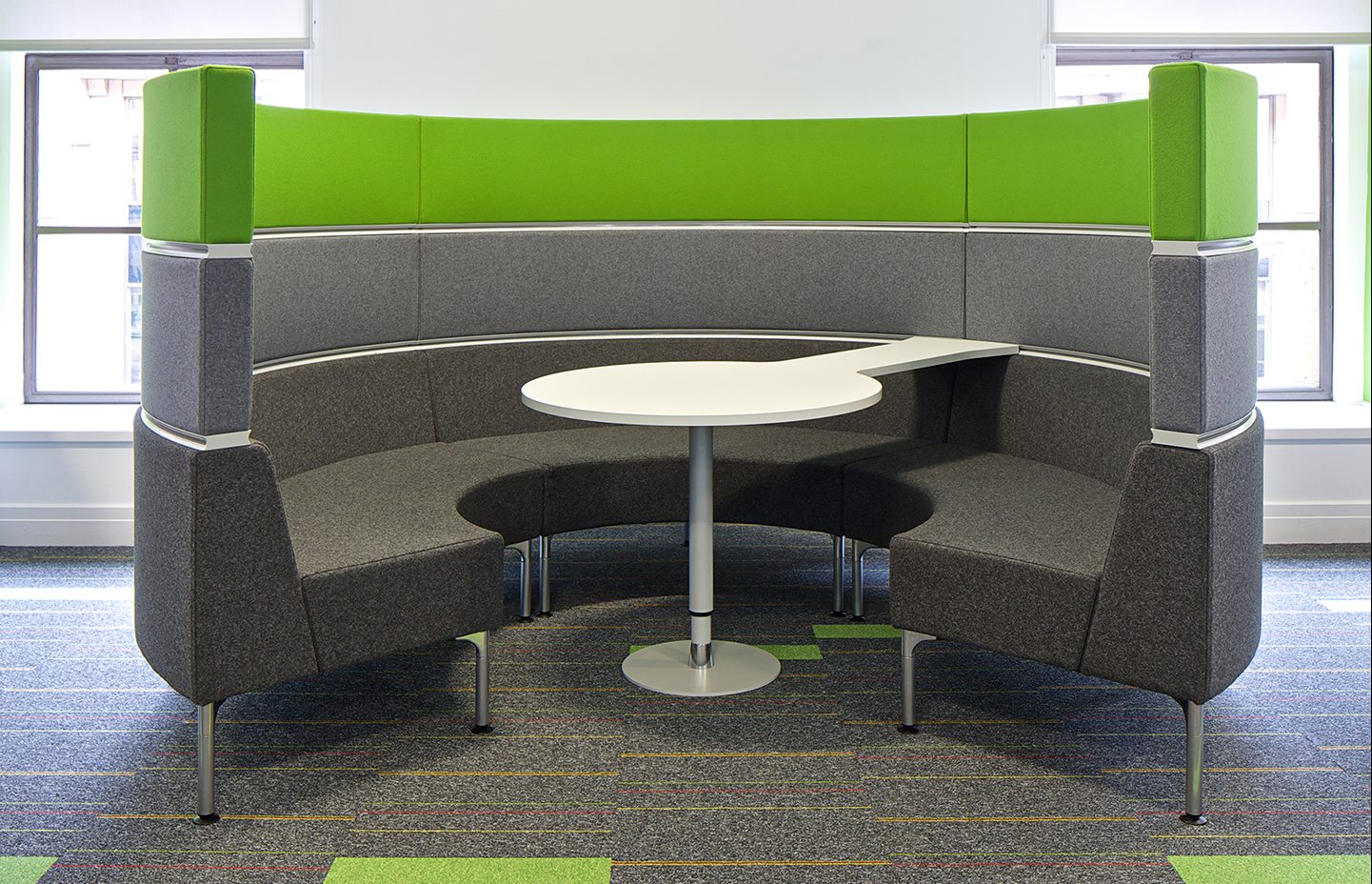
September, 2018
Activity Based Workplace or ABW solutions are on the rise, powerful catalysts for organisations to rethink how they are aligning their working environment with their strategic and cultural goals and objectives.
Providing workers with the freedom to choose when, how and where they are working can help them to become more productive, engage them in their work and boost their effectiveness and productivity. A deceptively simple solution to workplace design, ABW takes into account the effect personal tasks and preferences have on performance. Workers feel supported most when they have a range of workplace settings and technologies, coupled with a culture of collaboration and trust.
ABW puts the focus on people
When you create a working environment that is organised for a more enjoyable, productive and organised way of working, you provide the perfect circumstances for each worker as well as for the culture of the business. Whether people are gathering together to share knowledge, creating content, working on new designs, or developing new prototypes, workplace design should be more about the people who will be working in it than the building itself.
What goes into an Activity Based Workplace?
The very nature of activity-based workplaces means there is no ‘one-size-fits-all’ approach. How you design your ABW will depend entirely upon the activities that take place in the workplace you’re creating. As an example, consider a standard open-plan office that would generally be designed with standard desks, each occupied by a worker. The jobs of all those workers are likely to vary considerably, yet aside from the occasional difference in computer equipment, every desk is the same.
All activities are carried out in exactly the same environment, despite the fact the needs of the workers in each are drastically different. Some may collaborate as a team, other may need to concentrate alone. Some may require a lot of light to work on designs, or a temperature controlled environment for the equipment they use. The permutations are endless, yet the environment given to all activities is exactly the same.
By optimising the workplace to provide activity-specific areas, the design of the office is actively contributing to productivity as well as job satisfaction and the cohesive functionality of a team. Creating a circular desk for individual teams to sit around, all facing inward towards each other, will boost their communication and engagement. Having one corner with floor to ceiling windows to let in as much natural light as possible will improve the design team’s creativity.
Why ABWs are so effective
An effective ABW creates ‘zones’ for each activity that takes place, specifically designed to make that task as easy and effective as possible. One of the simplest ways to do this is to choose the best flooring option for each activity and use it to clearly delineate the purpose of each area. Even if all tasks require the same type of flooring, colour variation can achieve the same thing.
And yet there’s more to ABW than a hot-desking approach or simple open floor plan. Environmental factors can be tailored to tasks in subtle but essential ways, from tweaking the acoustics to supporting communication through layout, providing unlimited digital connectivity or paper-free zones that help you reduce waste and promote a green ethos.
Employee health and wellbeing can be improved by providing relief for the specific stresses and strains that come with everyday tasks. Meanwhile, workers find greater job satisfaction and motivation when they feel their environment is actively helping them in their work, rather than simply being a place to occupy space.